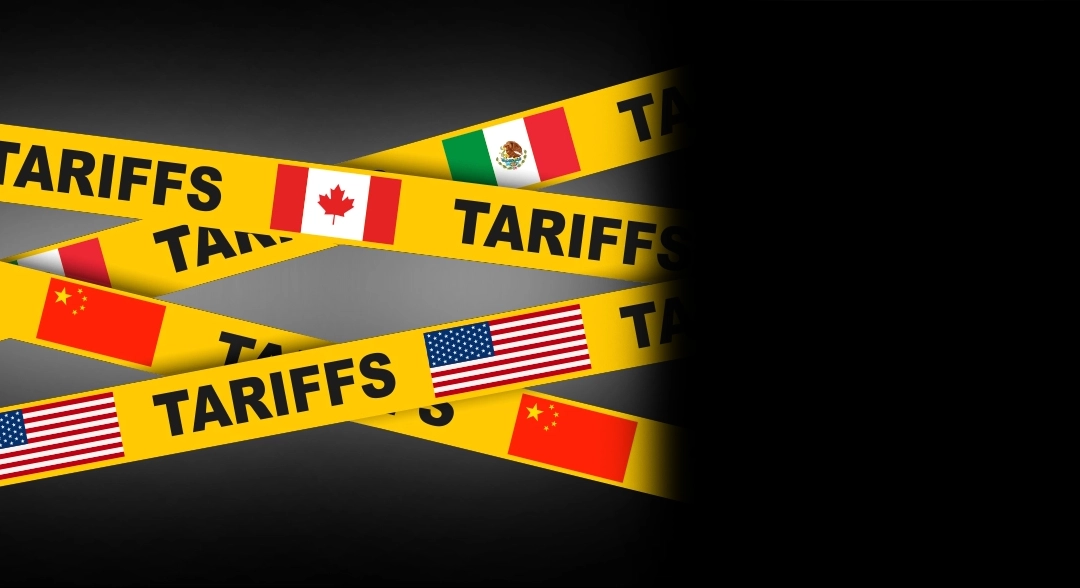Tariff Update – April 4, 2025
Beginning Saturday, April 5, a 10% baseline tariff will be applied to nearly all US imports. In addition, higher reciprocal tariffs—ranging up to and beyond 50%—will be imposed on over 60 countries with significant trade imbalances. Notably, Canada and Mexico are exempt under the USMCA agreement. Several targeted measures are already in effect, including a 25% tariff on foreign vehicles that began at midnight on April 3, and a 25% tariff on steel and aluminum, which has been active since March 12. A new “Venezuela Clause” also imposes a 25% tariff on imports from countries purchasing Venezuelan oil and gas. Examples of reciprocal tariff rates include: China at 34%, Vietnam at 46%, India at 26%, Cambodia at 49%, Sri Lanka at 44%, Indonesia at 32%, the EU at 20%, Israel at 17%, and the UK, Brazil, and Australia at 10%.
we are here to support you
Strategy Overview

FTZ Warehousing
Bonded warehouses or Foreign Trade Zones (FTZs) offer shippers a viable strategy to manage the impact of these upcoming import tariffs. By allowing shippers to store goods temporarily while deferring duty payments until the products physically enter the US market, this approach provides flexibility and cost control.

Prepare for Delays
Following the implementation of tariffs, customs and border services on both sides will need time to adapt to new processes and compliance measures, possibly increasing processing and clearance times. To mitigate potential delays, cross-border shippers should proactively adjust their logistics plans. Our team can help!

Supply Chain Mapping
Supply chain mapping is the process of visually documenting and analyzing the flow of goods, information, and resources across the entire supply chain. It provides a clear overview of how products move, where potential bottlenecks or inefficiencies exist, and where opportunities for cost savings and risk reduction can be found.
Talk to an Expert
Ready to implement tariff management strategies?
"*" indicates required fields
OVERVIEW OF THE NEW TARIFFS
On February 1, 2025, President Donald Trump signed executive orders imposing the following tariffs1:
- Mexico and Canada: A 25% tariff on all goods, with Canadian energy resources (including oil, natural gas, and electricity) subject to a lower 10% tariff. Originally planned for February 4, 2025, these tariffs took effect on March 4, 2025.
- China: An additional 10% tariff on top of existing duties, affecting a broad spectrum of goods which took effect as scheduled on February 4, 2025.
Canada and China have announced retaliatory tariffs already, while Mexico will announce their plans at an event on Sunday:
- Canada: Effective 12:01 a.m. EST on March 4th, Canada responded with 25% tariffs against $155 billion of American goods – starting with tariffs on $30 billion worth of goods immediately, and tariffs on the remaining $125 billion on American products in 21 days’ time.2
- China: On March 4th, China introduced tariffs on a range of U.S. agricultural goods, including specific meats, grains, cotton, fruits, vegetables, and dairy items. Additionally, Beijing imposed export and investment limitations on 25 U.S. companies, citing national security concerns. China’s Ministry of Commerce stated that the U.S. tariffs breach World Trade Organization regulations and “undermine the foundation for economic and trade cooperation between China and the United States.
Impact on Supply Chains and Market Conditions
The enforcement of these tariffs has led to several notable consequences3:
- Increased Costs: Strategic manufacturing processes involve the movement of raw materials, assemblies, and components between countries, a characteristic of North American manufacturing that formed the foundation of NAFTA and the USMCA. The new tariffs will reshape manufacturing practices and impact the cost of goods sold.
- Inflationary Pressure: The tariffs are driving up costs for imported goods, potentially contributing to higher prices for consumers on essential products. Companies will need to evaluate the competitiveness of their pricing, their capacity to absorb the increased costs, their ability to share these costs with vendors, and decide whether to pass the higher costs onto consumers through increased prices.
- Supply Chain Disruptions: Businesses dependent on imports from the affected countries are experiencing disruptions, prompting a reevaluation of sourcing and manufacturing strategies.
So, how can TRAFFIX help with tariff management?
Ready to talk about
tariff management strategies?
- https://www.whitehouse.gov/fact-sheets/2025/03/fact-sheet-president-donald-j-trump-proceeds-with-tariffs-on-imports-from-canada-and-mexico ↩︎
- https://www.pm.gc.ca/en/news/statements/2025/03/03/statement-prime-minister-trudeau-on-unjustified-us-tariffs-against-canada ↩︎
- https://www.wsj.com/economy/trade/trump-tariffs-what-next-prices-inflation-f497f161?reflink=desktopwebshare_permalink ↩︎
